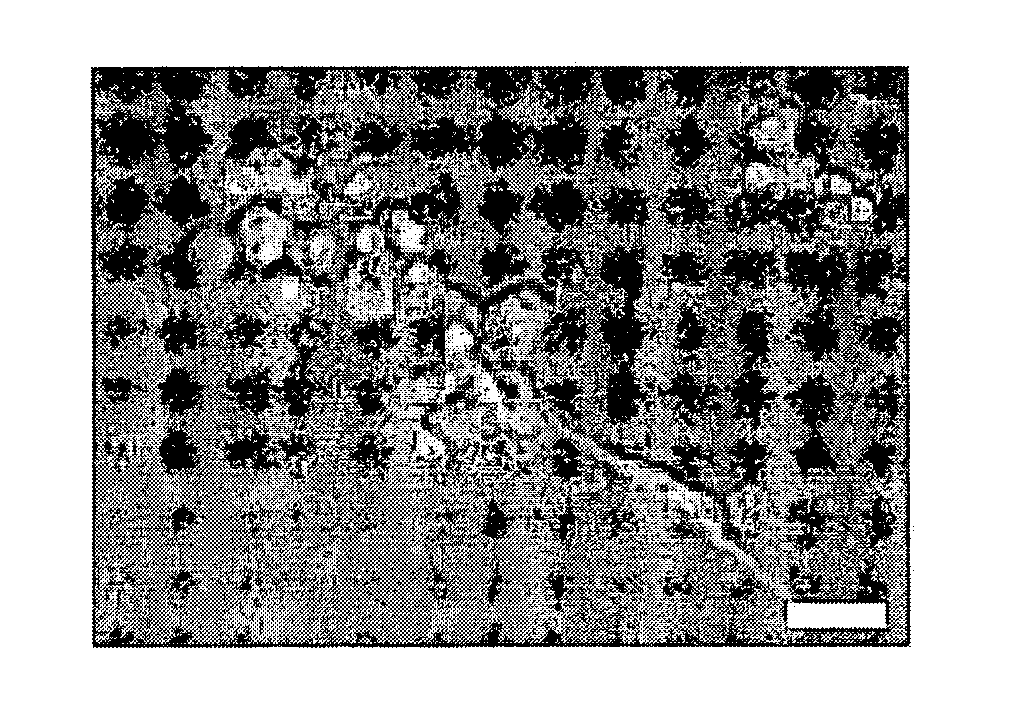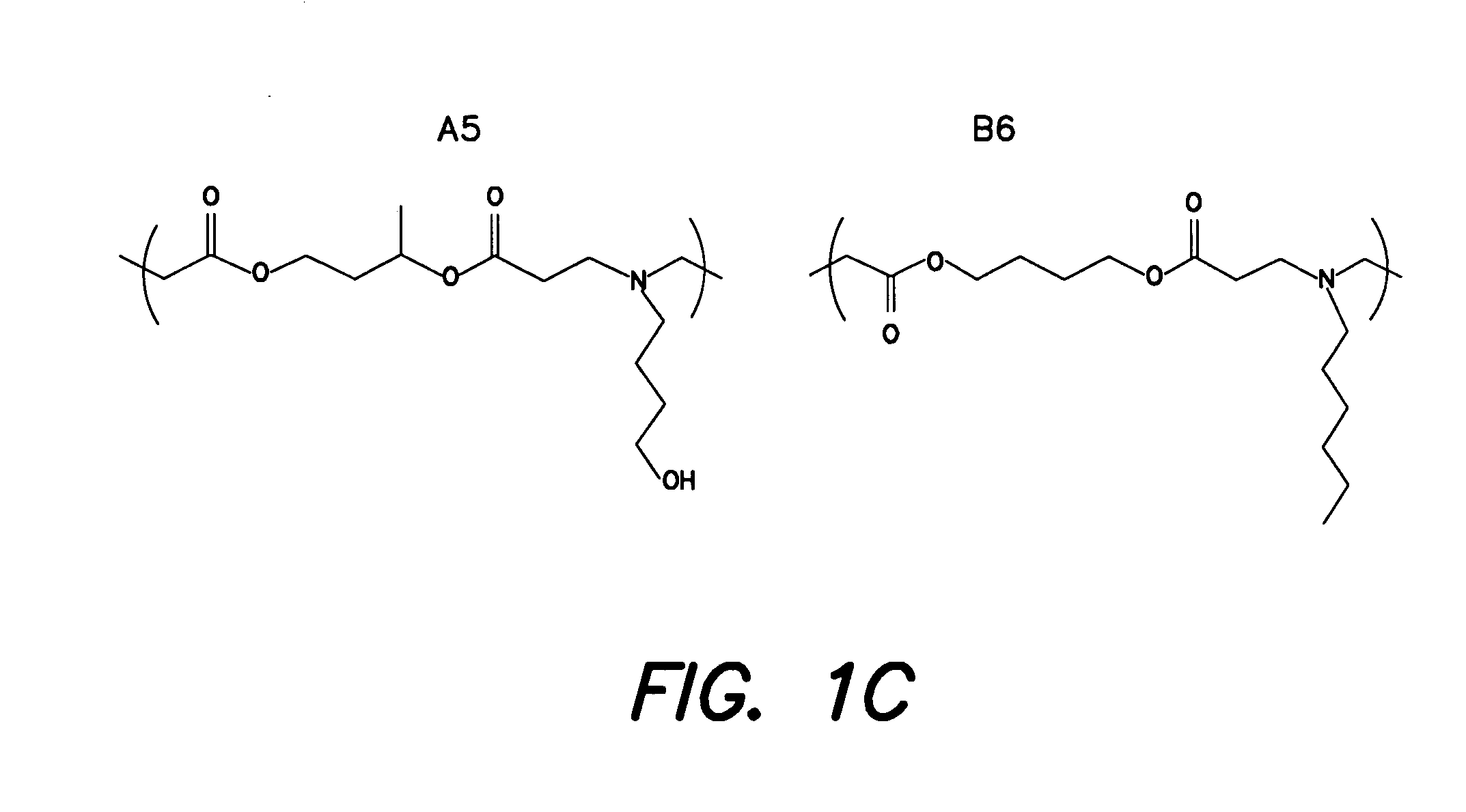Methods and products related to the intracellular delivery of polysaccharides
a polysaccharide and intracellular technology, applied in the field of intracellular delivery of polysaccharides, can solve the problems of unwanted side effects of anticoagulation in some embodiments, and achieve the effect of inhibiting cell proliferation and promoting apoptosis
- Summary
- Abstract
- Description
- Claims
- Application Information
AI Technical Summary
Benefits of technology
Problems solved by technology
Method used
Image
Examples
example 1
REFERENCES FOR EXAMPLE 1
[0171] 1. Sasisekharan, R., Shriver, Z., Venkataraman, G., and Narayanasami, U. (2002). Roles of heparan-sulphate glycosaminoglycans in cancer. Nat Rev Cancer 2, 521-528. [0172] 2. Perrimon, N., and Bernfield, M. (2000). Specificities of heparan sulphate proteoglycans in developmental processes. Nature 404, 725-728. [0173] 3. Conrad, H. E. (1998). Heparin-Binding Proteins (San Diego: Academic Press). [0174] 4. Esko, J. D., and Lindahl, U. (2001). Molecular diversity of heparan sulfate. J Clin Invest 108, 169-173. [0175] 5. Blackhall, F. H., Merry, C. L., Davies, E. J., and Jayson, G. C. (2001). Heparan sulfate proteoglycans and cancer. Br J Cancer 85, 1094-1098. [0176] 6. Liu, D., Shriver, Z., Venkataraman, G., El Shabrawi, Y., and Sasisekharan, R. (2002). Tumor cell surface heparan sulfate as cryptic promoters or inhibitors of tumor growth and metastasis. Proc Natl Acad Sci USA 99, 568-573. [0177] 7. Sperinde, G. V., and Nugent, M. A. (2000). Mechanisms of f...
example 2
REFERENCES FOR EXAMPLE 2
[0224] 1. Natke B, Venkataraman G, Nugent M A, Sasisekharan R. Heparinase treatment of bovine smooth muscle cells inhbits fibroblast growth factor-2 binding to fibroblast growth factor receptor but not FGF-2 mediated cellular proliferation. Angiogenesis 2000;3:249-57. [0225] 2. Lersch C, Gericke D, Classen M. Efficacy of low-molecular-weight heparin and unfractionated heparin to prevent adhesion of human prostate and bladder carcinoma and melanoma cells to bovine endothelial monolayers. An in vitro study and review of the literature. Urol Int 1996;56:230-3. [0226] 3. Nakamoto T, Chang C S, Li A K, Chodak G W. Basic fibroblast growth factor in human prostate cancer cells. Cancer Res 1992;52:571-7. [0227] 4. Bayatti N, Engele J. Cyclic AMP modulates the response of central nervous system glia to fibroblast growth factor-2 by redirecting signalling pathways. J Neurochem 2001;78:972-80. [0228] 5. Berry D, Shriver Z, Natke B, Kwan C, Venkataraman G, Sasisekharan R...
example 3
REFERENCES FOR EXAMPLE 3
[0260] 1. Klein G. Specific chromosomal translocations and the genesis of B-cell-derived tumors in mice and men. Cell 1983;32:311-5. [0261] 2. Klein G. The role of gene dosage and genetic transpositions in carcinogenesis. Nature 1981;294:313-8. [0262] 3. Gavioli R, Frisan T, Vertuani S, Bornkamm G W, Masucci M G. c-myc overexpression activates alternative pathways for intracellular proteolysis in lymphoma cells. Nat Cell Biol 2001;3:283-8. [0263] 4. Ruf I K, Rhyne P W, Yang H, Borza C M, Hutt-Fletcher L M, Cleveland J L, et al. Epstein-barr virus regulates c-MYC, apoptosis, and tumorigenicity in Burkitt lymphoma. Mol Cell Biol 1999;19:1651-60. [0264] 5. Ruf I K, Rhyne P W, Yang H, Borza C M, Hutt-Fletcher L M, Cleveland J L, et al. EBV regulates c-MYC, apoptosis, and tumorigenicity in Burkitt's lymphoma. Curr Top Microbiol Immunol 2001;258:153-60. [0265] 6. Wakisaka N, Murono S, Yoshizaki T, Furukawa M, Pagano J S. Epstein-barr virus latent membrane protein 1...
PUM
| Property | Measurement | Unit |
|---|---|---|
| Mass | aaaaa | aaaaa |
| Mass | aaaaa | aaaaa |
| Time | aaaaa | aaaaa |
Abstract
Description
Claims
Application Information
 Login to View More
Login to View More - R&D
- Intellectual Property
- Life Sciences
- Materials
- Tech Scout
- Unparalleled Data Quality
- Higher Quality Content
- 60% Fewer Hallucinations
Browse by: Latest US Patents, China's latest patents, Technical Efficacy Thesaurus, Application Domain, Technology Topic, Popular Technical Reports.
© 2025 PatSnap. All rights reserved.Legal|Privacy policy|Modern Slavery Act Transparency Statement|Sitemap|About US| Contact US: help@patsnap.com



